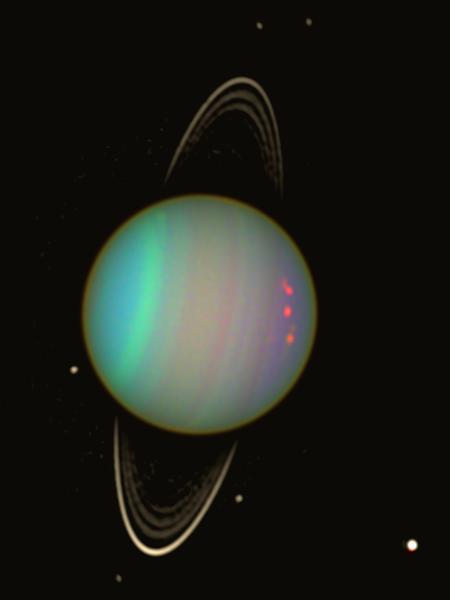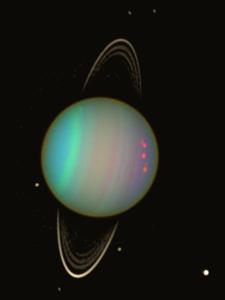
Rings and Moons Circling Uranus
By using certain types of color filters, as in this Hubble Space Telescope image of Uranus, astronomers can extract more information about a celestial object than our eyes normally can see. In this view, Uranus displays a banded structure of clouds and hazes aligned parallel to its equator. Additionally, a few discrete cloud features appear bright red. The color is due to methane absorption in the red part of the spectrum. Methane is third in abundance in the atmospheres of Uranus after hydrogen and helium, which are both transparent. Colors in the bands correspond to variations in the altitude and thickness of hazes and clouds. The colors allow scientists to measure the altitudes of clouds from far away. This view also reveals the planet's faint rings and several of its moons. The area outside Uranus was enhanced in brightness to reveal the faint rings and moons. The outermost ring is brighter on the lower side, where it is wider. It is made of dust and small pebbles. The bright moon in the lower right corner is Ariel, which has a snowy white surface. Five small moons with dark surfaces can be seen just outside the rings. Clockwise from the top, they are: Desdemona, Belinda, Portia, Cressida, and Puck. For more information, visit: hubblesite.org/contents/media/images/2004/05/1449-Image.html
- X

























